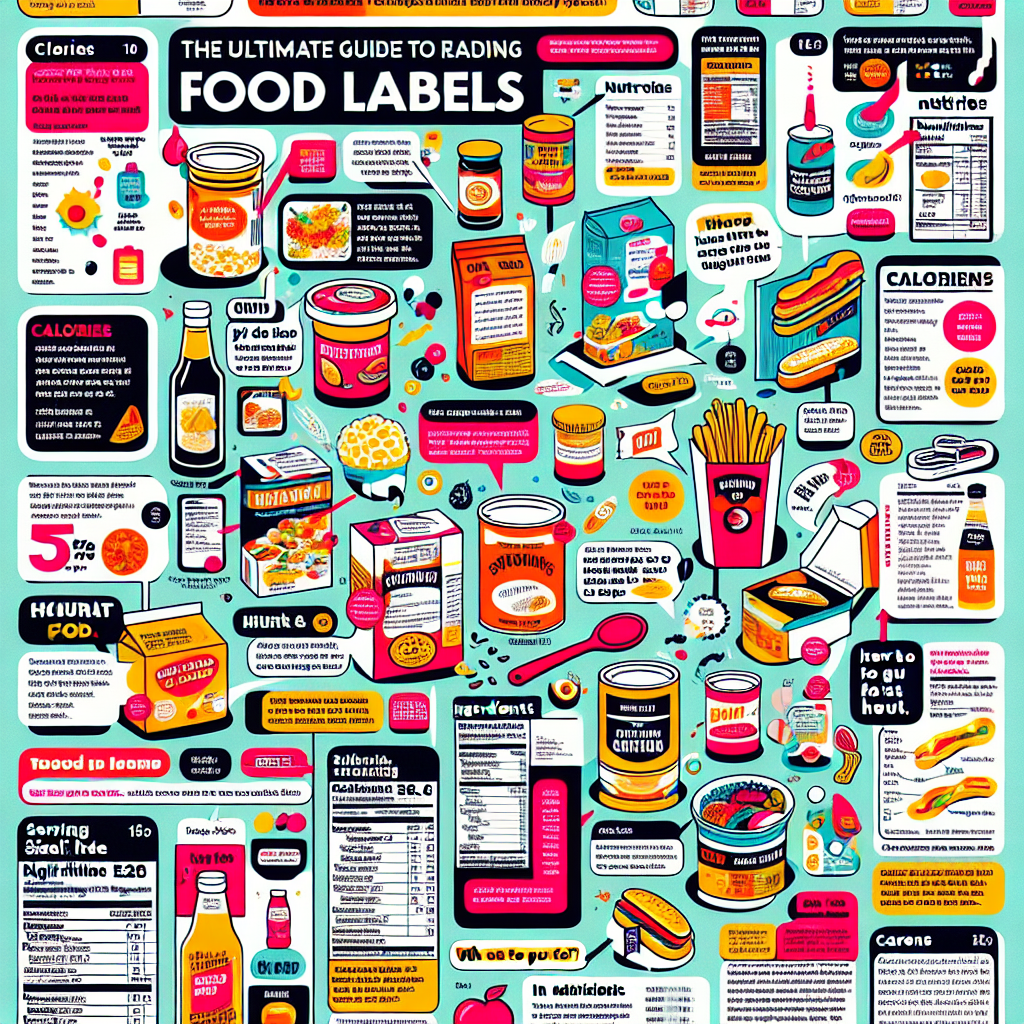-
Table of Contents
The Ultimate Guide to Reading Food Labels

Understanding food labels can be a daunting task. With a plethora of information, from nutritional facts to ingredient lists, it’s easy to get overwhelmed. However, learning how to read food labels is crucial for making informed dietary choices. This guide will help you navigate the complex world of food labels, enabling you to make healthier choices for you and your family.
Why Reading Food Labels is Important
Food labels provide essential information about the nutritional content of a product, including its calorie count, fat content, sugar levels, and more. They also list the ingredients used, which can be crucial for people with allergies or dietary restrictions. By understanding food labels, you can compare products, manage your nutrient intake, and avoid potential allergens.
Understanding the Nutrition Facts Label
The Nutrition Facts label is a detailed breakdown of the nutritional content of a food product. Here’s how to read it:
- Serving Size: This is the recommended portion of the food. All the nutritional information on the label is based on this amount.
- Calories: This number indicates how much energy you’ll get from one serving of the food. If you’re watching your weight, pay close attention to this number.
- Nutrients: This section lists the amount of total fat, cholesterol, sodium, carbohydrates, and protein in one serving. It also shows the percentage of the daily recommended intake of these nutrients based on a 2,000 calorie diet.
- Vitamins and Minerals: This section shows the percentage of the daily recommended intake of certain vitamins and minerals.
Decoding the Ingredients List
The ingredients list is equally important as it tells you what’s in the food. Ingredients are listed in descending order by weight, with the main ingredients listed first. Here are some tips for reading the ingredients list:
- Look for Whole Foods: The first few ingredients should be whole foods that you recognize, such as whole grains, fruits, or vegetables.
- Avoid Artificial Ingredients: If you see words that are hard to pronounce, they’re likely artificial ingredients or preservatives. Try to avoid these as much as possible.
- Watch Out for Hidden Sugars: Sugar can be listed under many names, including high fructose corn syrup, dextrose, and sucrose. If you see these in the ingredients list, the product is likely high in sugar.
Understanding Health Claims
Food labels often include health claims, such as “low fat” or “high fiber”. However, these claims can be misleading. For example, a product may be low in fat but high in sugar. Always check the Nutrition Facts label and ingredients list to verify these claims.
Case Study: The Impact of Food Labels on Consumer Choices
A study published in the Journal of the Academy of Nutrition and Dietetics found that people who read food labels tend to have healthier diets than those who don’t. The study analyzed data from over 25,000 Americans and found that label readers consumed less sugar, fewer calories, and more fiber. This highlights the importance of understanding food labels for making healthier dietary choices.
Conclusion
Reading food labels can seem complicated, but with a little practice, it becomes second nature. By understanding the Nutrition Facts label, decoding the ingredients list, and scrutinizing health claims, you can make informed decisions about the food you eat. Remember, the key to a healthy diet is balance, variety, and moderation. So, use food labels as a tool to help you achieve a balanced and nutritious diet.









